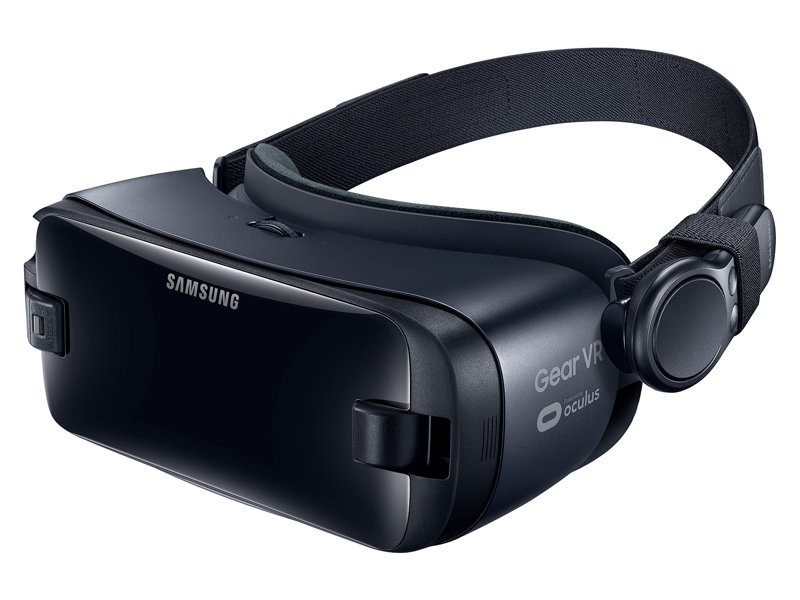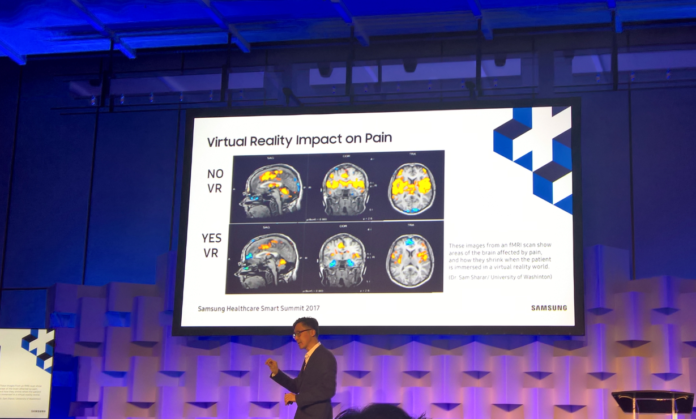Samsung is partnering with St. Vincent Hospital in Syndey, Australia for an exciting new trial that will explore how VR can help manage pain. The trial will look at two groups: both the elderly and young patients who have experienced trauma, in order to analyze how VR may assist in recovery rates. Samsung believes that its headsets can help combat the opioid crisis in the United States with targeted simulations providing patients with relaxation. Some early results seem to indicate the effects can continue up to 48 hours after a session.
Could VR used in physical therapy prove an end to harmful narcotics?
VR as a Research Tool
Using VR in this way is the first time we’ve really seen this technology explored as a device to help in pain management. We’ve seen many examples of VR helping to ease loneliness in patients, or to aid in re-training a brain suffering from neurodegenerative diseases.
Samsung believes that a patient in VR can recover faster and with fewer side effects than the traditional treatment.
In one example, the company points to instances where patients receive 50% less of a particular narcotic prior to abdominal surgery if they have experienced VR. Another example pointed to a woman who used VR as an epidural during childbirth.
A reduction in narcotics use would be huge, especially in the United States where addiction rates have skyrocketed in recent years.

Part of the reason why VR has become popular in this avenue, especially in the past few years, is that technology has become cheaper. Samsung’s own Gear headset is now backwards compatible with older models and almost every mobile device the company offers. Almost anyone with a cellphone can experience VR, leading researchers to experiment more with these devices. Development costs are low for these kinds of canned experiences, and patients can learn more about how their bodies work in the process. VR is both a powerful tool for learning, and unexplored territory in terms of mental development.
Experiences
Joy is built off Google’s Tilt Brush application, and it’s designed to help a patient combat isolation. Patients can use the virtual painting tool to create vivid imagery, and to build a world, which can be effective ways to help long-term patients.
A more practical application that could see usage right now is Relax VR, an application targeting the mental stressors that lead to illness. Specifically designed to help corporate users, Relax uses virtual scenarios to teach executives how to cope with the kind of stress that comes from high-pressure and high-stress jobs.
What these experiences share is a thread of calmness and a design built around easing anxiety. Much of pain management may be a mental game, one of the questions this study hopes to help provide some more data on. On the surface, it’s easy to categorize these experiences as distractions. What’s actually happening is far more interesting. Patients with Parkinson’s are experiencing a complete rewire of their brain, which is helping to improve physical balance. This change is huge, the mental impacting the physical, and puts a point in favor of using our brains to manage pain.
Implications
Samsung is hoping that patients will reduce the usage of narcotics, and still have the level of pain management we’re used to in modern medical science. If the trial is a success, the doctor’s office may be many people’s first introduction to VR. VR can help not only with pain management, but it may teach us about our diet or our bodies. Powerful simulations can show us how the choices we make as we age affect our physical fitness.
Of course, VR can be the solution for exercise and improved fitness too. The tools can be integrated for greater data on how a patient is progressing. Startups in this space will help improve how we both use and gather this data, but the possibility is there. VR is a breakthrough for medical science and pain management.











